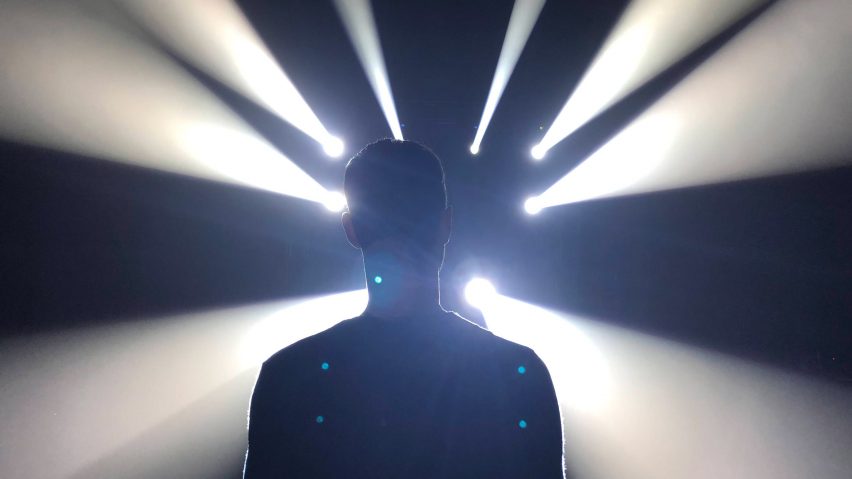As we count down the days until the start of Milan design week, editor Amy Frearson predicts the big trends that will emerge this year, from circular design to off-grid living.
This year's edition of Milan design week – the biggest event in the design calendar – takes place across the Italian city from 8 to 14 April. Hundreds of designers and brands from around the world will be showing their work, at the Salone del Mobile furniture fair, the Euroluce lighting show and all over the city.
Our pick of the 15 best exhibitions and installations to visit includes a structure built from bio-bricks to an exploration of neuroaesthetics from Google.
Trends we expect to emerge from among the shows include health and wellbeing for the home, an abundance of plants and encouragement for physical interaction.
Here's a closer look at all seven trends forecast for 2019:
Humans triumph over robots
As robots become more involved in our lives, designers are identifying the qualities that set humans aside from our electronic counterparts, and exploring how to make the most of them in their designs.
Students from the Academy of Arts, Architecture and Design in Prague will present Studiolo Robotico RUR, a performance installation that pits traditional craft against robotic manufacturing.
Office furniture brand Humanscale is working with Todd Bracher and Studio The Green Eyl on an installation that uses beams of light to analyse the way the human body moves, called Bodies in Motion.
Meanwhile a show by the Royal Danish Academy of Fine Arts, Different Bodies, will explore different body types, to reveal the dangers of designing for a standardised, average figure.
Brands explore the circular economy
Following the UN's warning that we have just 12 years to prevent environmental catastrophe, designers and brands are having to get serious about sustainability. Rather than simply recycling materials, companies are looking at how they can be more circular.
This will be the central focus of this year's Norwegian Presence exhibition, which highlights the work of designers based in Norway.
At Galleria Rossana Orlandi, Eileen Fisher's Waste No More exhibition will tell the story of the brand's zero-waste initiative, while the COS installation by architect Arthur Mamou-Mani, Conifera, will demonstrate the potential of bioplastic.
And at Ventura Future, eight Dutch designers will show their visions for a "liveable earth".
Physical interaction is encouraged
With digital communication showing no sign of slowing down, some designers in Milan this year will be exploring ways of promoting physical interaction and experience.
At Ventura Centrale, US-based Rapt Studio will create a set of spaces that encourage strangers to converse. Called Tell Me More, the installation will include "drapery-clad stages" for interaction and spotlights that highlight intimate one-to-ones.
Meanwhile this year's show from students at Swiss design school ÉCAL, called Sound & Vision, looks at how virtual reality can become more social.
Designers open bars and restaurants
Tom Dixon caused a stir this year with the news that he would be setting down permanent roots in Milan, in the form of restaurant and showroom The Manzoni.
He's not the only one opting to launch a venue, rather than an exhibition, for this year's Milan design week.
Dutch designer Maarten Baas has teamed up with furniture brand Lensvelt to transform their favourite restaurant into a bar, called Bar Baas, an irreverent take on the popular Milan drinking hole Bar Basso. Furnishings will include the pair's latest collaboration, the Maarten Baas 101 chairs and stools.
Health and wellbeing shapes home and workplace
The trend for furniture that can improve your health, whether at home or at the office, looks likely to continue in Milan this year.
Google has teamed up with brain scientists to create an installation that looks at how different aesthetic experiences can impact human biology and wellbeing. Called A Space for Being, it will allow visitors to record their physiological responses to different environments.
Architect and designer Antonio Citterio will be unveiling a range of home fitness equipment for Technogym, while designer Ilse Crawford has teamed up with Swedish bed brand Hästens to design products that can improve sleep.
Plants take over
Plants are certainly not a new interior design trend, but they are becoming more of a feature than ever before, as people realise the health benefits they offer.
The biggest example of this in Milan will be found in the headquarters of fashion brand Jil Sander, where Australian landscape artist Linda Tegg will create a living installation of wild plants, similar to the one she presented in Venice last year.
There will also be an abundance of plants in the Dassault Systèmes exhibition at Superstudio Più. Here, Honda will present Gardens Everywhere, an exhibition imagining a future of cityscapes covered in greenery.
Off-grid living becomes a new possibility
As people increasingly try to reduce their impact on the environment, off-grid living has become more popular than ever.
The biggest example of this in Milan will be a prototype of Casa Ojalá, a mobile home designed by Italian architect Beatrice Bonzanigo. The patented design is for a self-sufficient home that can be assembled in any location, in up to 20 different layouts.

